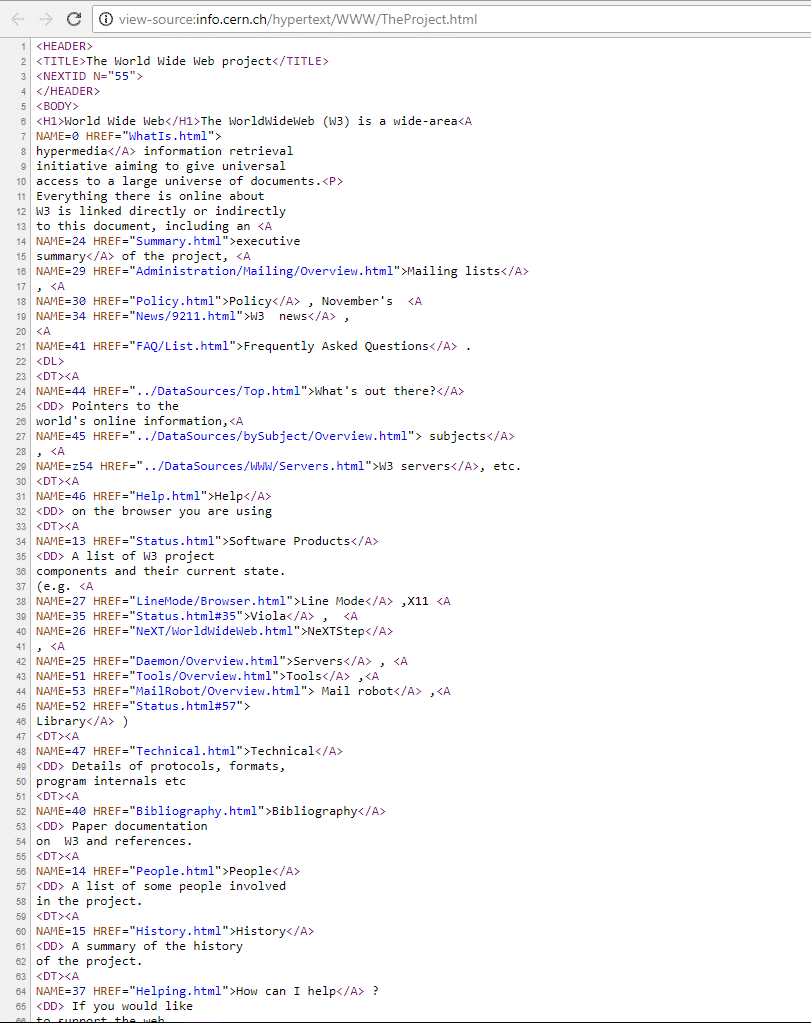Things have changed quite a lot since the creation of the web, but the remnants of its history are still online.
Today, everyone wants and loves HTML5, but there was a time when things were quite different. We are talking about the old internet, as early as the first half of the 1990s, before the dot-com bubble, where web pages were a niche for researchers and enthusiasts with long beards managing servers with Unix-like operating systems in dark rooms. HTML stands for Hypertext Markup Language.
The Origins
When HTTP was finally seeing the light, there was the need to establish a common ground for the creation of hypertext documents, that allowed linkage from one document to the other in which would become the dawn of a new era in the access to information and communications. Nowadays, the institutions that manage the HTML standards are the World Wide Web Consortium (W3C) and the Web Hypertext Application Technology Working Group (WHATWG). The first is a formal non-profit organization, while the second is more of a community of experts interested in the development of the technology. The objective of establishing these open standards is that all computers were able to understand the common components of the web with the goal of interoperability and independence of the machine, operating system and implementation. The first standard in which they got involved was HTML 2.0. Back in the time, it was more of a one-team work, lead by Tim Berners-Lee at the European Organization for Nuclear Research Laboratory (CERN), to share structured information through communication networks.
There was some previous work, called Standard Generalized Markup Language (SGML), standardized by the International Organization for Standardization (ISO). The designers decided to use the SGML framework to design HTML, so the early versions of the language could be called SGML-based languages. As of today, HTML5 is not an SGML-based language anymore but some ideas are still very present, for example, the concept of tags. On the other hand, SGML is so general that the use of the ”less than” and ”more than” symbols for tag delimitation can be configured on an SGML-compliant document but was fixed for HTML documents.
Elements
Some of the tags that we are more than used to were present on the very limited first version of HTML. For example, <TITLE>, the headings <H1> … <H6> or the paragraph tag <P> and some others have been deprecated, like <LISTING>, which is obsolete since HTML 3.2. Back then, all the tags were written in capital letters, at least in the documentation and the examples. The first page that was created for the world wide web is still accessible, with the original markup, which still looks as it is supposed to look in modern browsers.
Browser
At the same time that HTML was being developed, the need to have a browser arose, and so was addressed by the same team. They created what was called ”WorldWideWeb”, what happened to be the first browser in history, and the first web page editor as well, for the NeXT computer. The initial release happened on December 25, 1990. As can be easily imagined, it was the only browser in existence. It was later renamed to ”Nexus”, to avoid confusion with the whole concept of the WWW, and the source code was released onto the public domain on April 30, 1993. After the release, a number of web browsers appeared for different families of computers and operating systems, which helped to amplify the impact of the WWW. Due to technical difficulties, many implementations of new browsers dropped the editor feature, shaping what we understand now as a standard browser.
The Aftermath
We all know the aftermath. As of June 2018, it is estimated that there are more than 4.5 billion websites and between 40 and 50 billion web pages indexed by Google, making the WWW one of the technologies with the biggest impact in human history. It is to be noted that while the Internet was developed in the USA, the Web was developed in Europe, making it as well, one of the biggest European contributions to mankind in modern history. Tim Berners-Lee, a British national, has been granted the most prestigious awards, including the Turing Prize, which could be considered the equivalent of the Nobel Prize for Computer Science and is given by the Association for Computing Machinery (ACM), the Millenium Technology Prize, which is awarded by Technology Academy Finland for innovations that lead to a better life and an induction into the Internet Hall of Fame, which is managed by the Internet Society.
It has been a long road towards browsing web pages in our smartphones, but it has been run through very fast. The future looks bright.

